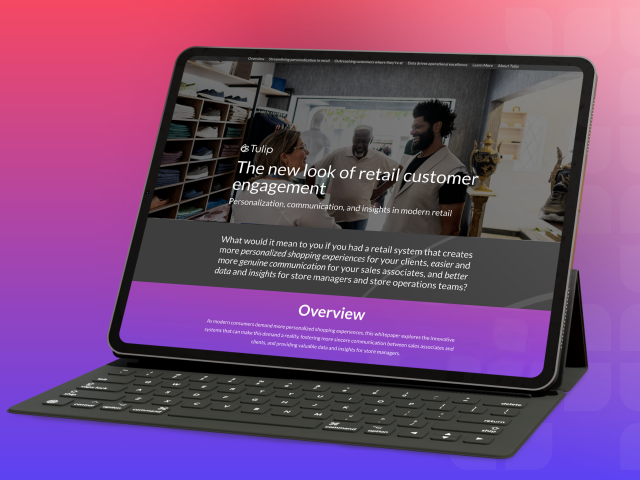As technology transforms the world in which we live and work, there’s plenty of discussion about ramifications for the country’s workforce. I’m particularly interested in the future of the one in ten workers in the United States economy currently employed in retail.
We are over the question of whether or not physical stores will exist going forward (spoiler: we WILL have stores), but retail leaders still face daunting questions:
- What changes can we expect as automation, artificial intelligence, and ecommerce continue to reshape the retail industry?
- What role will stores play going forward, and what are the economic models that make sense?
- How will store staffing models evolve over the coming decades?
- What role will associates have in the store of the future?
Retail is about people
While we can’t know precisely what stores will look like decades from now, we can be confident that people will continue to play a leading role in stores and the shopping experience. Without staff, stores become unmanned kiosks, and I don’t think that’s the experience customers want. Even Amazon Go stores with their automatic, cashier-less checkout still have lots of store staff to help customers.
The future of retail, as Bonobos co-founder Andy Dunn put it, “isn’t just physical products. It’s a bundle of physical products and customer service… those two things together create the experience that drives customer enthusiasm.”
As Dunn points out, consumers crave more than just inventory. They’re attracted to stores for expert product knowledge, a tactile representation of the brand, and human connections that can only occur “in real life.”
Automation is inevitable
Stores will exist in the future, and store employees will be important differentiators. So, nothing changes, right? Wrong! Digitization and automation are inevitable and coming to stores in a big way! Customers are too connected digitally, and the efficiencies from automation are too great for these trends not to fundamentally alter how stores operate. The pivotal question for retail leaders will be: What to automate and what to leave in the hands of store staff?
Proceed with caution
Retailers who thrive in this new paradigm will automate tasks selectively, focusing automation on non-value-added tasks and preserving high-value, customer-facing interactions for store staff.
Each retailer will have to grapple with tough questions including:
- Which tasks should be automated to drive profitability?
- Which areas of store management and execution should be done by store associates?
- What is the role of the customer in this conversation? How will all these changes align with the reasons customers come to stores in the first place?
- Do our store associates today have the skills and tools to perform this more focused role in the future? If not, how can they acquire these skills?
- Is our stores organization aligned with the new role of stores and store associates? Are they capable of recruiting, managing, coaching, and developing the level of talent our stores need to succeed?
- How do we ensure that each store has the right labor hours, sales goals, schedules, and daily plans to ensure a positive ROI on labor spend
With change imminent, retailers will need to build new “organizational muscles” to tackle these questions as well as the process and cultural changes that will follow.
Cultivating the right customer-facing skills and behaviors in store teams at scale, across tens, hundreds, or thousands of stores will be a challenge—particularly when store associate turnover often exceeds 100% annually. But retailers have no choice if they want to survive. Automation, digitization, and a new store associate model are all in our future. The retailer winners will be those who harness these trends before their competitors do.

